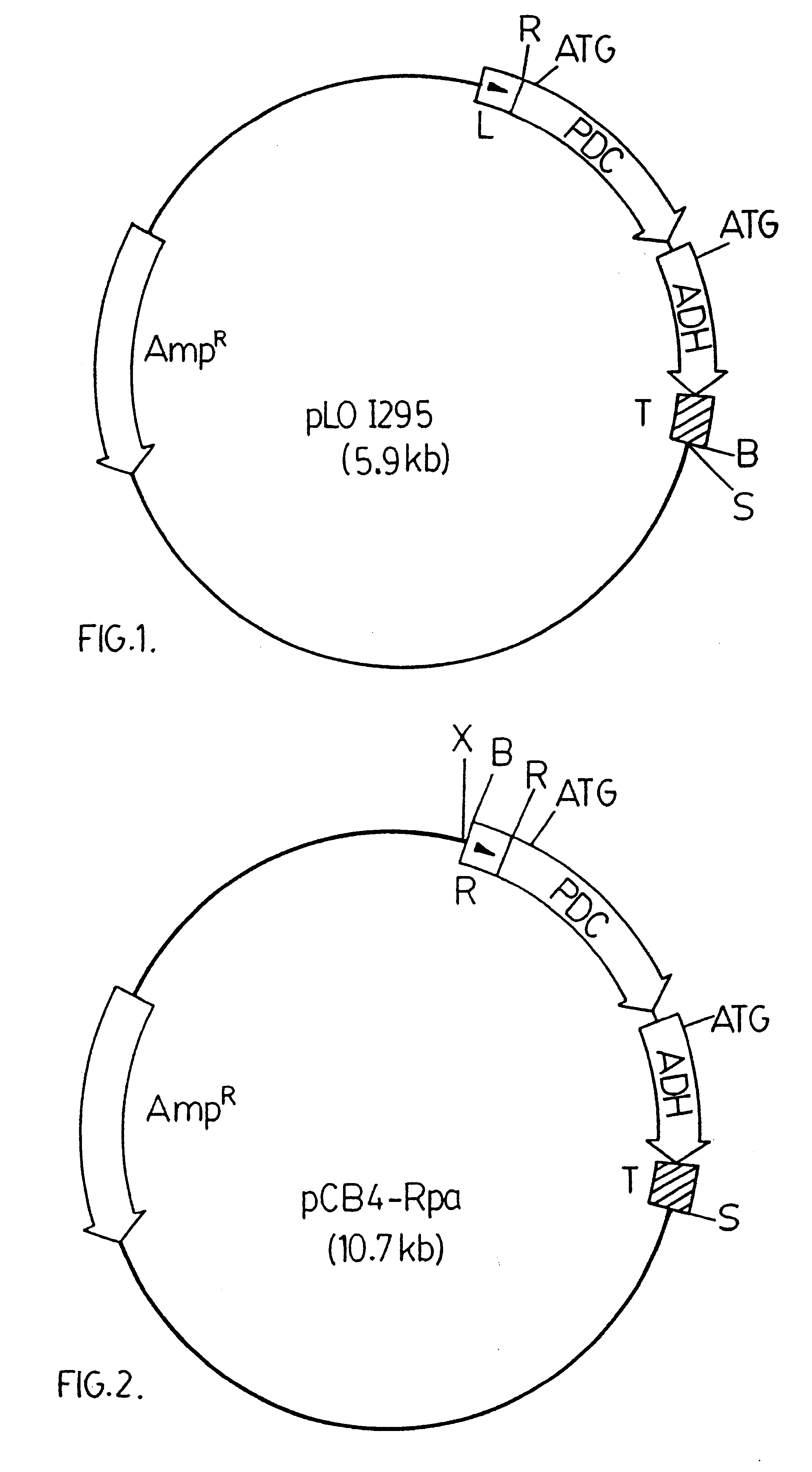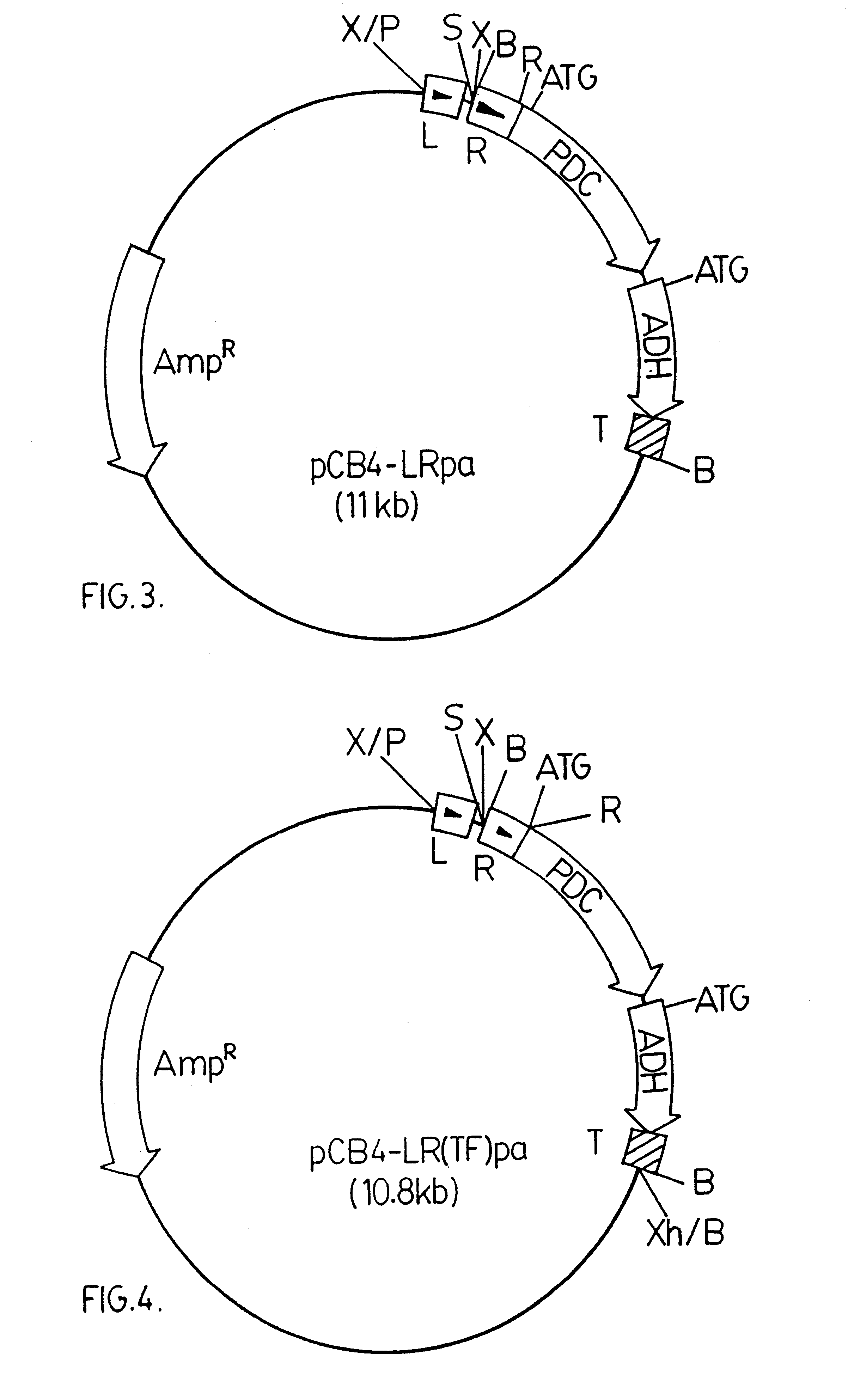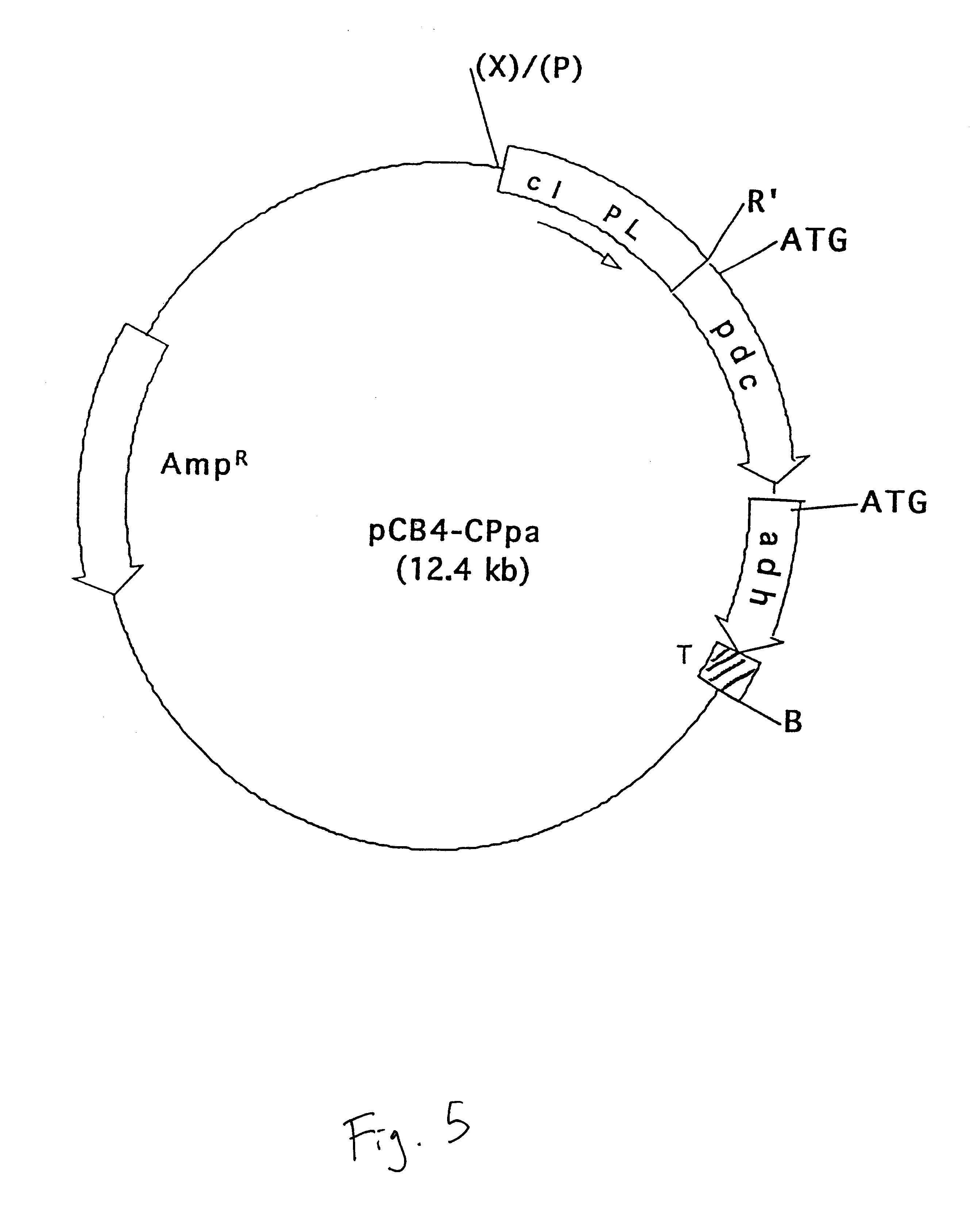Genetically modified cyanobacteria for the production of ethanol, the constructs and method thereof
a technology of cyanobacteria and ethanol, which is applied in the direction of biochemistry apparatus and processes, sugar derivatives, algae products, etc., can solve the problems of deterring refinement and high cost of process systems
- Summary
- Abstract
- Description
- Claims
- Application Information
AI Technical Summary
Benefits of technology
Problems solved by technology
Method used
Image
Examples
example 2
pCB4-LRpa
A 3.6 kbp BamHI DNA fragment from pRpa was ligated into a modified version of pCB4. The modified version of pCB4 is constructed by ligating a 220 bp PvuII-BamHI DNA fragment from the plasmid pBS (Stratagene Inc., 11011 North Torrey Pines Road, La Jolla, Calif., U.S.A. 92037), which fragment contains the lacZ promoter region from Escherichia coli, into the modified XbaI-BamHI sites of the pCB4 multi-cloning site. (Soltes-Rak E et al. (1993) "Effect of promoter modification on mosquitocidal cryIVB gene expression in Synechococcus sp. strain PCC 7942." Appl Environ Microbio. 59: 2404-2410). The 3.6 kbp DNA fragment is then ligated into the modified version of pCB4 resulting in the vector construct pCB4-LRpa. The vector construct pCB4-LRpa is illustrated in FIG. 3.
example 3
pCB4-LR(TF)pa
The pdc-adh coding region is driven by a combination of the rbcLS and lacZ promoter regions, as in pCB4-LRpa, but in this construct the Zymomonas mobilis pdc ribosome binding site and start codon have been removed and replaced with the corresponding DNA region of the rbcL sequence from Synechococcus PCC 7942 to generate a translation fusion product.
The pdc-adh DNA segment in pLOI295 plasmid is amplified and modified by PCR using the forward primer identified as SEQ ID No. 3 (containing an EcoRI site) and reverse primer identified as SEQ ID No. 4 (containing BamHI and XhoI sites). The PCR reaction mixture was as described above for Example 1. The temperature cycles were as follows: 93.degree. C. / 5 min; 4 cycles of 93.degree. C. / 1 min, 56.degree. C. / 1.5 min, 72.degree. C. / 3.5 min; 30 cycles of 93.degree. C. / 1 min, 65.degree. C. / 1.5.degree. C., 72.degree. C. / 3.5 min; 72.degree. C. / 5 min. The 3.1 kbp PCR product was then ligated into pRBCp at the EcoRI-XhoI sites (double-cu...
example 4
pCB4-CPpa
The vector pCB4-Rpa was digested with XbaI, end-filled with Klenow fragment of DNA polymerase I and re-digested with EcoRI to delete the rbcLS promoter. The vector was then ligated to a PstI-EcoRI fragment containing the CI857 repressor gene and P.sub.L promoter sequence, collectively termed the cI-PL gene sequence (EMBL Accession No. L05669; Sanger et al. Nucleotide sequence of the bacteriophage lambda DNA. 1982, J. Mole. Biol. 162: 729-773) and identified as SEQ. ID. No. 7. The P.sub.L promoter had been isolated from the plasmid pHUB2-CI857 (Gruber et al. (1991)) "Escherichia coli-Anacystis nidulans plasmid shuttle vectors containing the P.sub.L promoter from bacteriophage lambda." Curr. Microbio. 22:15-19). The vector was litigated by digestion with PstI, end-filling with Klenow and a second digestion with EcoRI. The recombinant plasmid is designated as pCB4-CPpa.
PUM
 Login to View More
Login to View More Abstract
Description
Claims
Application Information
 Login to View More
Login to View More - R&D
- Intellectual Property
- Life Sciences
- Materials
- Tech Scout
- Unparalleled Data Quality
- Higher Quality Content
- 60% Fewer Hallucinations
Browse by: Latest US Patents, China's latest patents, Technical Efficacy Thesaurus, Application Domain, Technology Topic, Popular Technical Reports.
© 2025 PatSnap. All rights reserved.Legal|Privacy policy|Modern Slavery Act Transparency Statement|Sitemap|About US| Contact US: help@patsnap.com



